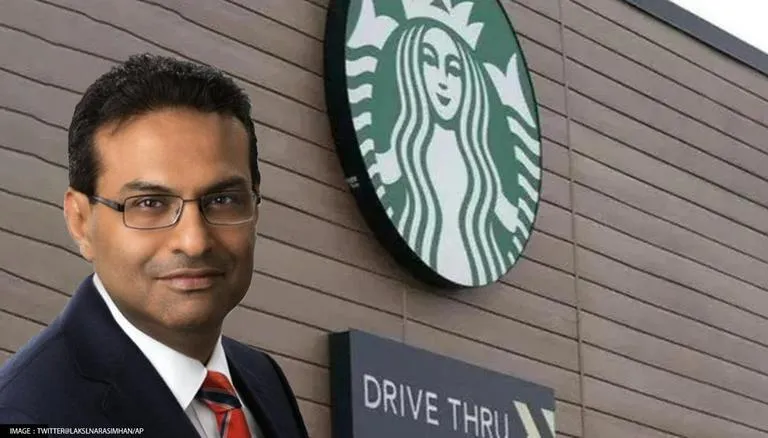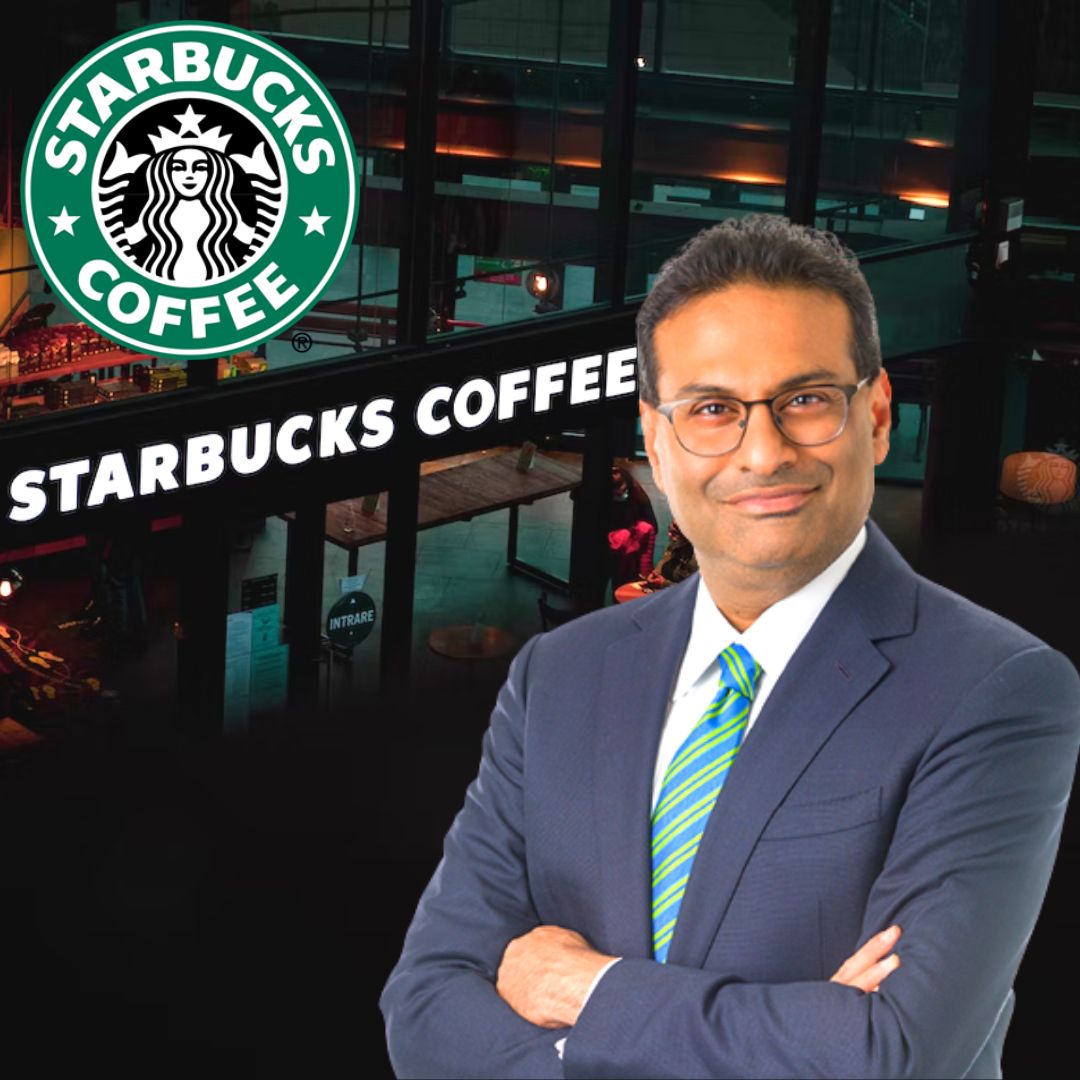Howard Schultz: The Visionary Leader

Howard Schultz’s journey from a Starbucks employee to becoming CEO is a testament to his entrepreneurial spirit and unwavering vision. From his early days as a marketing executive, Schultz recognized the potential of Starbucks’ unique coffeehouse concept and its ability to connect with customers on an emotional level. His leadership style, marked by a deep passion for coffee, a commitment to customer experience, and a belief in the power of community, has been instrumental in transforming Starbucks into a global coffeehouse giant.
Schultz’s Leadership Style and its Impact on Starbucks’ Growth, Ceo of starbucks
Schultz’s leadership style is characterized by his charismatic personality, his ability to inspire and motivate employees, and his unwavering focus on customer satisfaction. He instilled a culture of innovation and excellence at Starbucks, encouraging employees to embrace change and strive for continuous improvement. This approach, coupled with his strategic vision, has been crucial in driving Starbucks’ growth and expansion into a global brand.
Key Moments in Schultz’s Tenure as CEO that Shaped Starbucks’ Brand and Culture
Schultz’s tenure as CEO has been marked by several pivotal moments that have shaped Starbucks’ brand and culture.
- In 1987, Schultz acquired Starbucks and embarked on a mission to transform it into a “third place” – a space where people could connect, socialize, and enjoy a high-quality coffee experience. This vision has become a defining characteristic of Starbucks, fostering a sense of community and belonging among its customers.
- The introduction of the Frappuccino in 1995 was a significant innovation that broadened Starbucks’ appeal beyond traditional coffee drinkers. This iconic beverage, with its creamy texture and customizable flavors, has become a symbol of Starbucks’ commitment to innovation and its ability to cater to evolving customer preferences.
- In 2008, amidst a period of declining sales and customer dissatisfaction, Schultz returned as CEO and implemented a series of initiatives aimed at restoring Starbucks’ core values and reconnecting with its customers. This included a renewed focus on customer service, barista training, and product quality. This period of revitalization solidified Starbucks’ position as a leader in the coffee industry and set the stage for its continued growth.
Examples of Schultz’s Innovative Initiatives
Schultz’s leadership is characterized by a commitment to innovation and a willingness to embrace change. His innovative initiatives have played a crucial role in shaping Starbucks’ success.
- The introduction of the Frappuccino, a blended coffee drink, expanded Starbucks’ appeal beyond traditional coffee drinkers. This innovative beverage, with its creamy texture and customizable flavors, became a symbol of Starbucks’ commitment to innovation and its ability to cater to evolving customer preferences.
- The launch of Starbucks Reserve Roasteries, a premium coffee experience, showcased Starbucks’ commitment to coffee craftsmanship and provided a platform for showcasing rare and unique coffees from around the world.
- The introduction of the Starbucks Rewards program, a loyalty program that offers personalized rewards and benefits, fostered customer engagement and loyalty. This initiative has been instrumental in driving repeat business and building a strong customer base.
Starbucks’ Business Strategy

Starbucks’ business strategy has been instrumental in its rise to become a global coffeehouse giant. The company’s success can be attributed to a carefully crafted blend of a strong brand, a customer-centric approach, and strategic expansion. This analysis delves into the core elements of Starbucks’ business strategy, examining its evolution over time and the factors driving its sustained success.
Core Business Model and Evolution
Starbucks’ core business model revolves around offering a premium coffee experience, encompassing high-quality coffee beans, handcrafted beverages, and a comfortable and welcoming atmosphere. The company’s initial focus was on establishing a strong brand identity through its unique coffee offerings and distinctive store design. This emphasis on quality and experience laid the foundation for Starbucks’ enduring success.
Over time, Starbucks has expanded its business model to encompass a wider range of products and services, including tea, pastries, sandwiches, and merchandise. The company has also leveraged technology to enhance the customer experience, introducing mobile ordering, loyalty programs, and personalized recommendations. These innovations have helped Starbucks adapt to changing consumer preferences and maintain its competitive edge.
Factors Contributing to Starbucks’ Success
- Customer Experience: Starbucks prioritizes providing a positive customer experience, focusing on personalized service, a welcoming atmosphere, and a consistent high-quality product. The company’s commitment to customer satisfaction has fostered a loyal customer base, contributing significantly to its success.
- Brand Loyalty: Starbucks has cultivated a strong brand identity, associating itself with values such as quality, community, and sustainability. This brand loyalty translates into repeat customers and a strong market presence, enabling Starbucks to command premium pricing and maintain its competitive advantage.
- Innovation: Starbucks continuously invests in innovation, introducing new products, services, and technologies to stay ahead of the curve. From its early adoption of espresso-based drinks to its recent foray into plant-based alternatives, Starbucks’ commitment to innovation has kept it relevant and appealing to a diverse customer base.
Expansion Strategy
Starbucks’ expansion strategy has been characterized by a multi-pronged approach, encompassing global expansion, market diversification, and strategic acquisitions.
- Global Presence: Starbucks has established a strong global presence, with over 33,000 stores in 80 countries. The company’s international expansion strategy involves adapting its offerings to local tastes and preferences while maintaining its core brand values. This localized approach has enabled Starbucks to successfully penetrate diverse markets.
- Market Diversification: Starbucks has diversified its product offerings beyond coffee, introducing tea, pastries, sandwiches, and merchandise. This diversification has broadened its customer base and increased its revenue streams, mitigating dependence on a single product category.
- Strategic Acquisitions: Starbucks has strategically acquired companies in complementary sectors, such as Teavana and Evolution Fresh, to expand its product portfolio and enhance its competitive position. These acquisitions have provided Starbucks with access to new markets, technologies, and expertise.
Comparison with Competitors
Starbucks’ business strategy is characterized by its focus on customer experience, brand loyalty, and continuous innovation. Compared to its competitors, such as Dunkin’ Donuts and McDonald’s, Starbucks distinguishes itself by offering a premium coffee experience, a strong brand identity, and a more sophisticated and diverse product portfolio. While competitors focus on affordability and convenience, Starbucks positions itself as a lifestyle brand, appealing to customers seeking a higher-quality and more engaging coffee experience.
Challenges and Opportunities for Starbucks: Ceo Of Starbucks

Starbucks, despite its global dominance, faces a complex landscape of challenges and opportunities. While its brand recognition and loyal customer base are significant strengths, the company must navigate a dynamic environment characterized by intense competition, evolving consumer preferences, and economic uncertainties. This necessitates a strategic approach that leverages its strengths while addressing weaknesses and capitalizing on emerging trends.
Competition in the Coffee Industry
The coffee industry is highly competitive, with a plethora of established players and emerging brands vying for market share. Starbucks faces competition from various sources:
- Specialty Coffee Shops: Local and regional coffee shops often offer a more personalized experience and unique blends, attracting customers seeking a more intimate and artisanal coffee experience. Examples include Blue Bottle Coffee, Stumptown Coffee Roasters, and Intelligentsia Coffee. These brands often focus on high-quality beans, ethical sourcing, and unique brewing methods, appealing to a niche segment of coffee enthusiasts.
- Fast Food Chains: Fast food chains like McDonald’s and Dunkin’ Donuts have expanded their coffee offerings, offering affordable and convenient options that cater to price-conscious consumers. Their extensive reach and established infrastructure allow them to compete effectively on price and accessibility.
- Supermarkets and Convenience Stores: Supermarkets and convenience stores increasingly offer a wide range of coffee options, including pre-ground coffee, single-serve pods, and ready-to-drink coffee. This provides customers with a convenient and affordable alternative to specialty coffee shops.
- Online Retailers: Online retailers like Amazon offer a vast selection of coffee beans, brewing equipment, and accessories, providing consumers with a convenient and price-competitive option. This poses a challenge to Starbucks’ retail operations and its ability to maintain a premium pricing strategy.
Changing Consumer Preferences
Consumer preferences are constantly evolving, driven by factors such as health consciousness, sustainability, and a desire for personalized experiences. These shifts present both challenges and opportunities for Starbucks:
- Health and Wellness: Consumers are increasingly seeking healthier beverage options, leading to a demand for lower-calorie, sugar-free, and organic alternatives. Starbucks has responded by introducing plant-based milk options, sugar-free syrups, and healthier food choices, but it needs to continue innovating to meet evolving health preferences.
- Sustainability and Ethical Sourcing: Consumers are increasingly concerned about the environmental and social impact of their purchases. Starbucks has made efforts to promote sustainability through initiatives like ethical sourcing, waste reduction, and renewable energy, but it needs to remain transparent and accountable to maintain consumer trust.
- Personalized Experiences: Consumers desire personalized experiences, including customized orders, personalized recommendations, and digital interactions. Starbucks has implemented mobile ordering, personalized rewards programs, and digital menu boards, but it needs to continue enhancing its digital capabilities to provide a seamless and engaging customer experience.
Economic Fluctuations
Economic fluctuations, such as recessions, inflation, and currency fluctuations, can impact consumer spending and affect Starbucks’ profitability. During economic downturns, consumers may reduce discretionary spending, leading to a decrease in demand for premium coffee products. Starbucks needs to adapt its pricing strategies and product offerings to navigate these economic challenges.
The CEO of Starbucks, Laxman Narasimhan, has a challenging role in navigating the coffee giant through a changing consumer landscape. One interesting aspect to consider is the compensation of other high-level executives within the company, such as Brian Niccol, the former CEO of Taco Bell, who now heads up the company’s North American business.
You can find out more about Brian Niccol’s salary here , which provides insights into the compensation strategies employed by Starbucks.
Howard Schultz, the iconic CEO of Starbucks, has been instrumental in shaping the company’s global presence and brand recognition. His leadership has been closely tied to the performance of SBUX stock, a key indicator of investor confidence in the company’s future.
To learn more about the intricate relationship between Starbucks’ leadership and its stock performance, you can explore a detailed analysis of sbux stock and its implications for the company’s overall success.